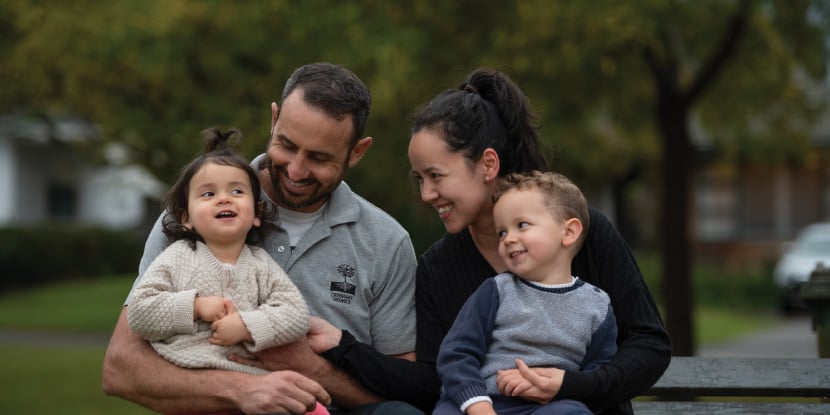
Manna with her brother Sage, dad Mark and mum Patricia
Patricia Ilchuk can still recall the day in August 2020 when her daughter Manna – then five weeks old – had her first seizure.
“I’d never seen a seizure before,” the Perth mum-of-two said. “I was on the bed, looking at Manna, and all of a sudden she had these five little jerks and just looked at me. It was like time stood still.
“Later that day she did it again, then again. She just kind of paused, did that, then went back to normal.”
Patricia and her husband Mark went to Armadale Hospital, where Manna had another seizure, then drove to Perth Children’s Hospital. An overnight stay and a battery of tests revealed little, with doctors confirming Manna was having seizures but saying she otherwise seemed to be doing well.
Over the next few days the seizures became longer and more frequent – escalating first to five, then 10 a day.
We went back to hospital and that time she stayed five or six weeks while they tried medication after medication. They’d give each one a day or two, see she didn’t respond, then introduce a new one. They kept saying ‘There’s hundreds of medications, we just need to find the right one’.
“It felt like if we could just find that one, it would be fine – but after three or four the neurologist did mention that given it wasn’t really changing, there was probably something underlying going on.”
It took until the end of 2020 before a genetic test taken during Manna’s first hospital stay revealed she had CDKL5 Deficiency Disorder, a condition Patricia and Mark had never heard of.
“At a genetics appointment a while after they told us it’s nothing that’s passed on from either of us – it’s basically random, like you’ve been hit by lightning,” Patricia said.
“It’s still hard to process. Obviously, her life is changing and we still don’t know what it will look like.”
Now aged two, Manna has full body seizures several times a week and regular mini-seizures that frighten her awake – making it difficult for her to sleep more than a couple of hours at night and more than 5–10 minutes at a time during the day.
She’s rolling and trying to crawl but has low muscle tone and struggles to push up. She has little vision due to her brain’s inability to interpret what she sees, and has never babbled but vocalises vowel sounds and loves to laugh.
She does have a lot of hard days where seizures just make her upset and her sleep is a big issue.
“But when she’s happy she’s really happy – really giggly. She loves being cuddled and squeezed and tickled. Hearing the voices of people around her lights her up.”
The family is heartened by efforts to find treatments and the fact that, despite the condition’s rarity, Perth is host to a major CDKL5 research hub at The Kids Research Institute Australia. They have joined the CDKL5 database and, thanks to Associate Professor Helen Leonard, have made contact with an American family whose daughter, a few years older, has the same mutation as Manna.
“That really helped because at the beginning it was so unknown, what it would look like for her as she gets older, but having that other person – seeing their life, being emailed photos – just helped us see there is a life outside, it’s not all doom and gloom,” Patricia said.
Asked what she’d most like to see come out of research efforts, Patricia said a cure was top of the list, but treatments that could help with Manna’s seizures, sleep, and vision would make a huge difference.
“That’s all our hope is, to be able to help our little ones be able to develop in all those important areas.”
